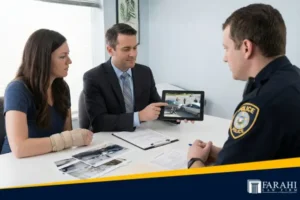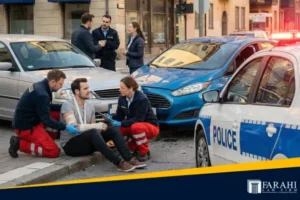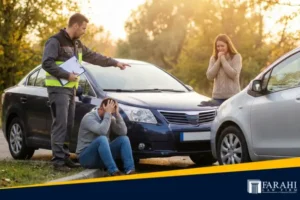Summary
Pain and suffering in child injury cases cover both physical and emotional trauma. California law allows compensation for long-term psychological effects, with therapists often serving as expert witnesses. Courts assess non-economic damages based on evidence like medical records, impact on the child’s life, and expert testimony.

When a child is seriously hurt, the consequences go far beyond bruises and broken bones. Whether from pedestrian accidents, school or daycare accidents, or recreational crashes, these incidents can cause lasting emotional trauma.
In California, calculating pain and suffering in a child injury case is more complex than it seems, especially because children experience and express trauma differently. Knowing how compensation is determined can help you feel more in control if you’re navigating this painful road.
Here, we will discuss how pain and suffering are evaluated in child injury cases under California law, and what steps you can take to protect your child’s future.
How California Courts Evaluate Pain and Suffering in Child Injury Cases
Pain and suffering refer to non-economic damages in a California personal injury claim. These cover the emotional, mental, and physical distress a child endures after an injury, whether caused by a car accident, vehicular crash, or incidents at school or daycare.
California law does not provide a fixed formula to calculate these damages. Instead, courts rely on several factors:
- Severity and duration of the injury
- Impact on the child’s daily life and development
- Medical records and diagnosis
- Use of long-term medical care or therapy
- Expert testimony from therapists or child psychologists
- Visual evidence (photos, videos, journaling)
In many cases, injury attorneys bring in therapists or psychologists to explain the emotional toll the injury has taken on the child. This is especially common in brain injury or wrongful death claim scenarios involving a sibling or parent.
According to the National Library of Medicine, road traffic injuries are the leading cause of death for 15–19-year-olds and the second most common among 10–14-year-olds. This shows the grave risks involved and the urgency of properly valuing non-economic harm in these cases.
What Makes Child Injury Pain and Suffering Unique?
Children process trauma differently from adults. They may develop phobias, regress emotionally, or struggle with trust and anxiety long after the physical wounds have healed.
Some examples of non-economic damage include:
- Difficulty sleeping or eating
- Academic or social setbacks
- Fear of public spaces or specific places (like intersections after pedestrian accidents)
- Lasting scars or disabilities
In California, a child injury lawsuit often includes two claims:
- The child’s claim for pain and suffering, future medical costs, emotional trauma, and therapy needs
- The parents’ or guardians’ claim for medical bills, caregiving burden, and related medical equipment, or time off work
Example Case: Child Injury
Let’s take a hyper-local look. A 12-year-old child injured in a motorcycle and truck accident on Ming Avenue in Bakersfield required multiple surgeries, suffered PTSD, and was unable to return to school for several months.
A child psychologist testified about the social isolation and trauma caused by the accident. The jury awarded significant compensation for pain and suffering due to these long-term effects.
Actionable Steps for Families Handling Child Injury Cases
If your child was injured due to someone else’s negligence, take the following steps to protect their legal rights and emotional well-being:
Immediate Steps:
- Get immediate medical care
- Document all treatments and symptoms
- Consult a therapist or psychologist early
- Gather all medical records and incident reports
Legal Steps:
- Contact the best child injury attorney in Bakersfield
- File a California personal injury claim within the statute of limitations
- Discuss insurance claims and whether a contingency fee applies
Key Experts in Child Injury Lawsuits
Expert | Role in the Case |
Pediatricians | Confirm medical diagnosis and recovery timelines |
Child Psychologists | Assess emotional trauma and testify in court |
Economists | Estimate long-term therapy and education-related expenses |
Accident Reconstructionists | Reconstruct events in complex vehicular accidents |
FAQs
Yes, but it must be filed by a parent or guardian on behalf of the child.
No cap generally exists, but each case varies based on evidence and jury decisions.
In California, the 2-year deadline usually starts when the child turns 18 due to tolling laws. However, acting sooner is wise to protect evidence and related parental claims.
Yes, the law considers how the incident aggravated the condition.
Let Us Help You and Your Child Reclaim Peace of Mind
Child injury cases are emotionally complex and legally challenging. At Farahi Law Firm, our team understands the lasting impact an accident can have on a child’s life. If you’re in the Bakersfield area—near Valley Plaza Mall, White Lane, or beyond—speak with a compassionate legal team that fights for your child’s right to healing, safety, and justice.
Call the best child injury attorney in Bakersfield today. We offer free consultations, and you don’t pay unless we win—because every child deserves to heal without the burden of medical expenses or legal stress. Secure the medical care and compensation your child deserves.



